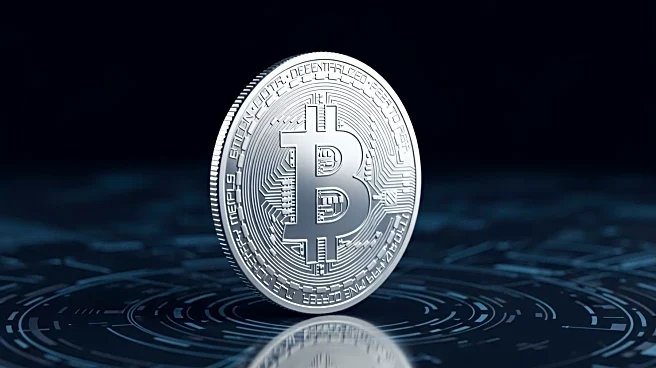What's Happening?
The integration of stablecoins into traditional banking infrastructure is becoming increasingly important as they emerge as a backbone of global payment systems. Industry experts suggest that banks should not view stablecoins as competition but rather
as an opportunity to enhance their existing payment rails. The programmability and low-cost settlement offered by stablecoins present clear advantages, prompting banks to innovate and find ways to add value, such as offering custody, compliance, and instant settlement services. Collaborating with fintech partners is seen as crucial for banks to adapt and remain central to the evolving financial landscape.
Why It's Important?
The rise of stablecoins represents a significant shift in the global payment infrastructure, challenging traditional banks to evolve and integrate these digital assets into their operations. As stablecoins become more mainstream, banks that fail to adapt risk being left behind in the rapidly changing financial environment. The integration of stablecoins can provide banks with new revenue streams and enhance their service offerings, making them more competitive and resilient. This development underscores the need for financial institutions to embrace innovation and collaborate with fintech companies to stay relevant.
What's Next?
Banks are expected to explore various strategies for integrating stablecoins into their product suites, potentially transforming them into yield-bearing treasury products. The focus will be on building infrastructure that treats stablecoins, tokenized bank deposits, and real-time payments as complementary tools. Financial institutions will likely prioritize speed over cost savings in stablecoin transactions, influencing cross-border payment strategies. As stablecoins gain traction, banks may need to adjust their regulatory compliance frameworks to accommodate these digital assets.
Beyond the Headlines
The integration of stablecoins into banking systems may lead to broader changes in the financial industry, including shifts in regulatory policies and consumer behavior. As digital assets become more prevalent, banks may need to address ethical and security concerns related to their use. The adoption of stablecoins could also impact the global economy, influencing monetary policy and financial stability. This development highlights the importance of balancing innovation with responsible practices to ensure the long-term sustainability of the financial sector.













